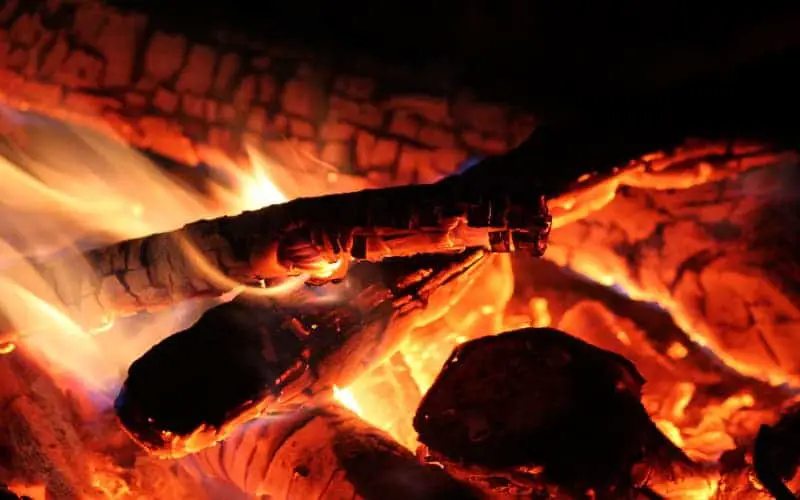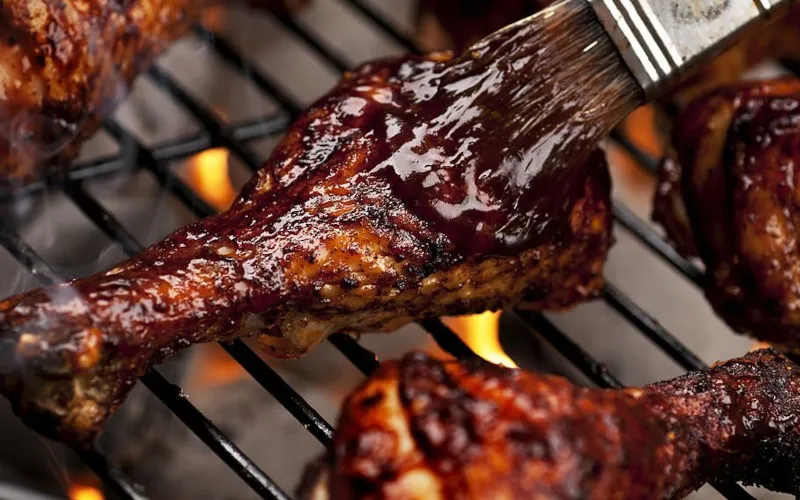Gas grills are useful for those of you who want to cook a meal outdoors without the hassle of building a pit and burning wood. They have gotten more advanced over the years, but they use some basic principles that haven’t changed much in modern grilling history.
Gas grills got their start around 1906 when George Stephen invented an outdoor kitchen that used gas to provide heat. He called this early grill a ‘Weber,’ and it was the first gas grill to be mass-produced.
Since then, many innovations have been made in the technology used in producing a great-tasting meal on a gas or charcoal grill. One of these changes is what type of material is being used for the cooking space itself.
Today’s grills usually use lava rocks or ceramic briquettes heated by a burner to cook with. But before those materials became popular, wood or lava rocks were frequently used as the heat source for outdoor cooking spaces.
How Lava Rocks Became Popular
For this story, we’ll focus on one specific brand of grill that only started manufacturing their products in 1965: Weber. They are known for being an innovative company that uses high-quality materials and craftsmanship to create some of the best grills on the market.
Weber has been in business since 1952, and its first model looks very different from the ones being sold today.
So how did they make such a drastic change?
Raising Awareness for Grilling
Back when Weber introduced their original kettle grill that year, there was hardly any information or cookbooks sharing recipes for cooking on gas grills. Wood was still king if you wanted a good BBQ, but many people were starting to shift towards using gas instead.
To raise awareness for this new way of outdoor cooking, Weber used lava rocks as fuel because were simple and inexpensive compared to wood.
Even though these rocks took longer to heat up than propane or charcoal briquettes, they offered great stability and even heating for the food. Because of this, many people wouldn’t be able to tell a difference between grilling with wood or lava rocks.
Over time, companies like Weber realized that they didn’t need to market their grill as being great because it used ‘stones’ instead of wood.
Instead, they began highlighting some of the other benefits that made using charcoal briquettes better: they were easier to light and distribute heat more evenly across the cooking space throughout the entire cooking process.
And since these two qualities are essentials for creating great tasting BBQ, it became clear that marketing should focus on making those features stand out over anything else about them.
Because Lava Rocks Were Harder To Clean
Over time though we’ve learned that there is a reason briquettes and rocks were used for so many years: they are cheap.
People who wanted to cook outdoors prior to the 1940s didn’t have any other options besides using wood or stones because they hadn’t invented propane tanks yet. One of the downsides of this type of fuel is that it requires a longer amount of time for you to start cooking.
Because of this, people end up burning their food because they got impatient waiting for the grill to heat up. Another issue with lava rocks was that they took more time than briquettes or gas burners to clean after a long cookout.
Briquettes left behind ash that could be scooped out and disposed of easily, but ashes from lava rocks had to be scattered in larger quantities and they were more difficult to clean.
Another Lava Rock Grill Was Created
But it wasn’t just the cooking that was a problem. Washing the grill itself was also a chore. Cleaning lava rocks after each cookout required people to use wire brushes, ammonia, or extra thick cleaning pads because of all the residue that remained on them once they had been heated for several hours straight.
After using these materials, you could rub off what little ash hadn’t been cleaned away with warm water and soap as well.
The huge amount of time it took to clean these grills didn’t make sense anymore though when gas burners were offered shortly after their invention in 1952.
They used propane tanks instead of wood or lava rocks which meant it only took a few minutes to light them up, and the only thing you needed to clean after cooking was the cooking surface itself. The finish used for these cast iron burners proved to be extremely resistant against any rust or corrosion that might appear.
Lava rocks have become expensive! To make matters worse, lava rock prices had skyrocketed since they were being used as fuel for grills. This is probably because there are less of them around and many people can’t find any at all anymore.
Prices for twelve-inch pieces of premium lava rock ranged from $1.25-$2 each which made it too expensive for most people’s taste.
The End For Lava Rocks In Grills
We’ve learned why Weber stopped using lava rocks in their grills completely in the ’80s. For those of you who have newer grills, you can ignore this information because they simply don’t use them anymore.
Even if you did have lava rocks for your grill, it’s not worth it to go looking for more since they are still very expensive and hard to find right now.
If you are one of many people whose friends or family members have tried using lava rocks in their gas grills in the past few years, then there’s a good chance that disappointment has been shared among all of them as well.
The best thing to do when cooking with gas is to stick with charcoal briquettes which will be easier on the wallet and burn better than rocks ever will!






